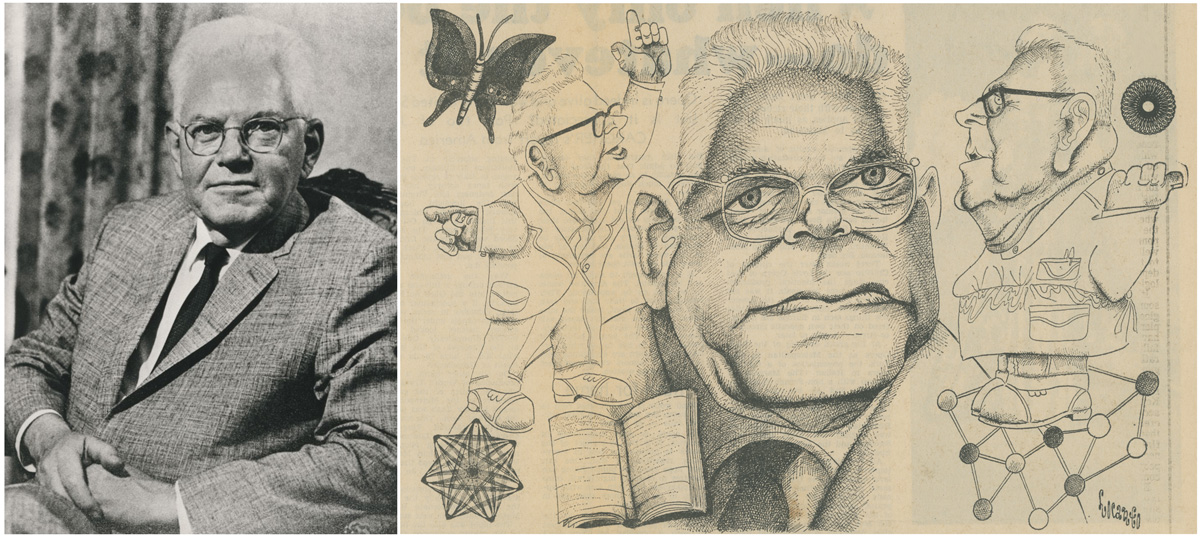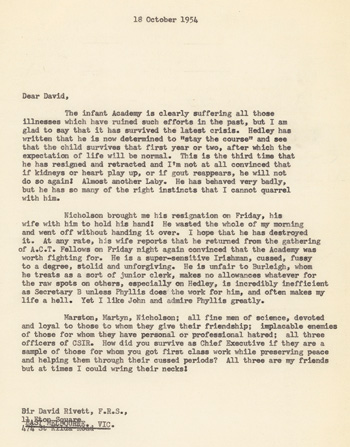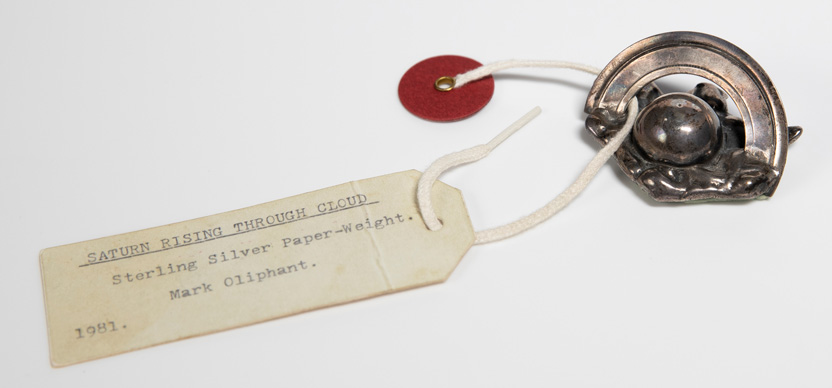
An Australian Academy of Science collection of papers belonging to one of the twentieth century’s most influential physicists has been digitised as part of an ongoing collaborative project with the National Library of Australia.
Professor Sir Mark Oliphant AC KBE FAA FTSE FRS (1901 – 2000) is perhaps best known for his pioneering research into nuclear physics at Cambridge in the 1930s, his role in the development of atomic weapons and his remarkable contribution to World War II-era radar research.
Professor Oliphant was one of several distinguished scientists who returned to Australia in the years following the war who collectively did much to establish a national scientific identity separate from the traditional research powerhouses in Europe and America. He was the only expatriate scholar to accept an invitation to establish a research school at the nascent Australian National University (ANU), where he became the foundation Director of the Research School of Physical Sciences and, along with physicist Dr David Forbes Martyn, was the instigator behind the formation of the Australian Academy of Science.
The Academy’s Sir Mark Oliphant collection provides a documentary record of its early years under Professor Oliphant’s inaugural presidency and is now freely accessible via Trove. It depicts a fascinating saga of Australian science and politics in the 1950s and 60s, critical decades in which the country’s key scientific characters worked together to create the learned Academy that represents Australian science today.

The collection shows Professor Oliphant’s efforts to bypass the regional and personal antagonisms that had sunk earlier efforts to create a national academy and points to influential personalities acting behind the scenes as the organisation emerged. It touches on the decision to ask Australians inducted into the Royal Society of London to be the first Fellows of the new Academy in an attempt to remove bias from the selection process. The theory was that if they had been honoured by such a prestigious foreign institution, they would surely be acceptable as founders of its Australian counterpart. This solution solved one problem but created others when it became apparent that while the Royal Society was indifferent to Australia-based squabbles, its local Fellows were not.
Professor Oliphant’s term as Academy President began in 1954, the year the Academy was formed, and his papers describe it as fraught. At any moment, he might be asked to deal with a member of the brand-new Academy Council threatening resignation, accusations that others were airing grievances in the press, arguments over who should be elected to the Fellowship and unfolding drama arising from the Academy’s relationship with CSIRO, the state universities and ANU, and their various areas of responsibility.
He found support in close collaborators like Dr David Martyn, biochemist Dr Hedley Marston and retired CSIRO chair Sir David Rivett. Their tireless work on behalf of the infant Academy kept it afloat despite records showing the three had wildly differing views and did not always like one another during the challenging early years of the organisation. Oliphant was often left to bridge the gap and play peacemaker, a role at which the gregarious but outspoken and blunt man proved adept but did not relish.
The collection points to Oliphant’s ongoing influence over the Academy. His well-documented 1954 objection to electing Sydney-based Professor Harry Messel to the Fellowship – which can be traced to Oliphant's fear that Messel would hand over research into atomic energy to private industry – may have kept Messel from any recognition by the organisation until 2014, when he was awarded the Academy medal for his contribution to Australian science.
Indications of Oliphant’s place in the broader social and political landscape can be seen in copies of his correspondence with Prime Minister Robert Menzies and Federal Treasurer Arthur Fadden, which range from discussing government support for scientific research to encouraging the creation of an Australian National Museum, a full 25 years before one was established in 1980.
For more information on Sir Mark Oliphant’s scientific legacy and his second career as Governor of South Australia, see the biographical memoir first published in Historical Records of Australian Science in 2000, or explore the archive collection held by the Barr Smith Library of the University of Adelaide.

The Academy thanks philanthropist Mr David Anstice, whose support made digitisation of the Sir Mark Oliphant collection possible. If you would like more information about supporting the archive digitisation project, please contact our Philanthropy Manager at philanthropy@science.org.au.
© 2025 Australian Academy of Science